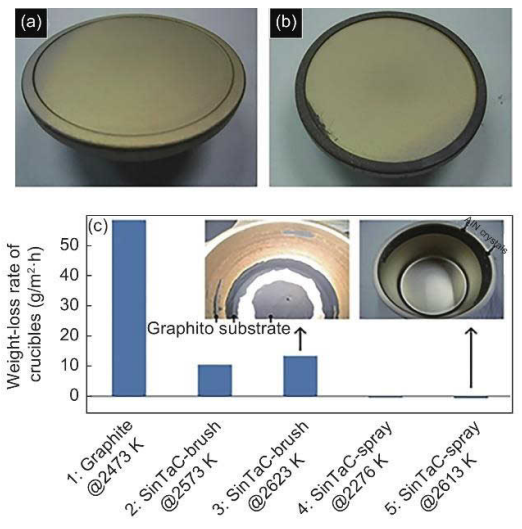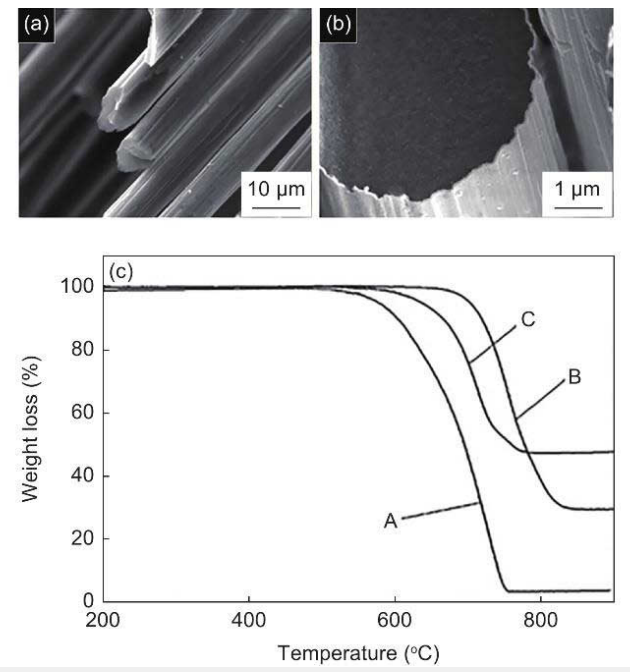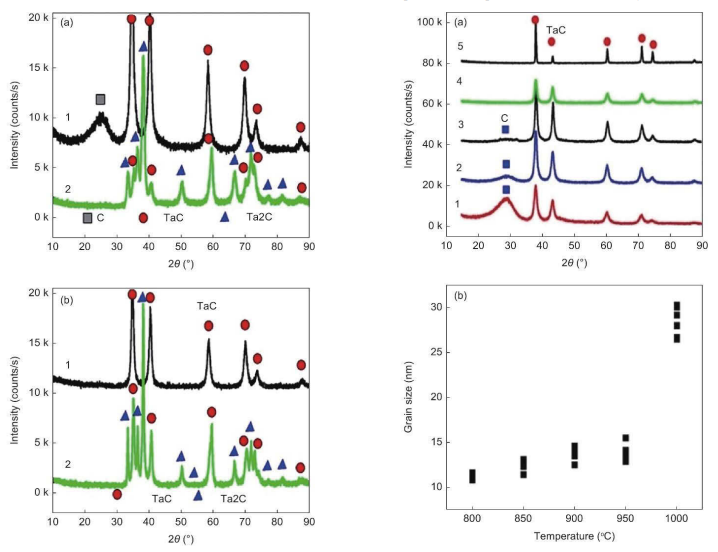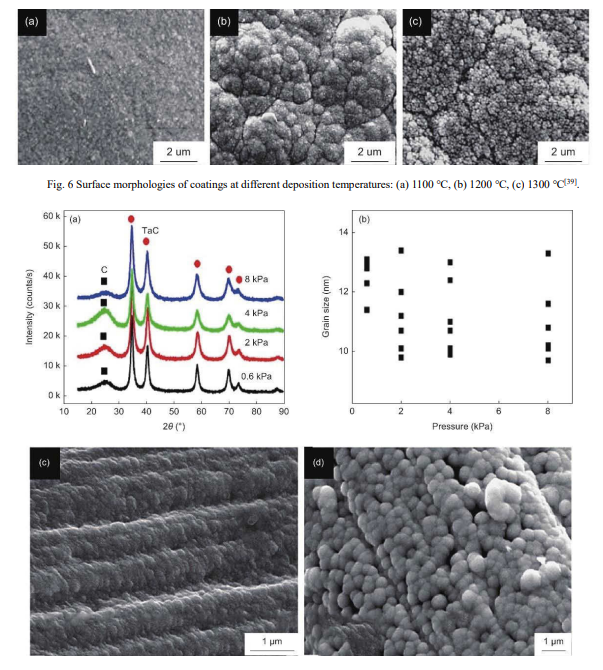
- English
- Español
- Português
- русский
- Français
- 日本語
- Deutsch
- tiếng Việt
- Italiano
- Nederlands
- ภาษาไทย
- Polski
- 한국어
- Svenska
- magyar
- Malay
- বাংলা ভাষার
- Dansk
- Suomi
- हिन्दी
- Pilipino
- Türkçe
- Gaeilge
- العربية
- Indonesia
- Norsk
- تمل
- český
- ελληνικά
- український
- Javanese
- فارسی
- தமிழ்
- తెలుగు
- नेपाली
- Burmese
- български
- ລາວ
- Latine
- Қазақша
- Euskal
- Azərbaycan
- Slovenský jazyk
- Македонски
- Lietuvos
- Eesti Keel
- Română
- Slovenski
- मराठी
- Srpski језик
Research Progress of TaC Coatings on Carbon-Based Material Surfaces
2024-08-22
Research Background
Carbon-based materials such as graphite, carbon fibers, and carbon/carbon (C/C) composites are known for their high specific strength, high specific modulus, and excellent thermal properties, making them suitable for a wide range of high-temperature applications. These materials are widely utilized in aerospace, chemical engineering, and energy storage. However, their susceptibility to oxidation and corrosion in high-temperature environments, along with poor scratch resistance, restricts their further application.
With technological advancements, existing carbon-based materials are increasingly unable to meet the stringent demands of extreme environments, particularly regarding oxidation and corrosion resistance. Therefore, enhancing the performance of these materials has become a key research direction.
Tantalum carbide (TaC) is a material with an extremely high melting point (3880°C), excellent high-temperature mechanical stability, and corrosion resistance. It also exhibits good chemical compatibility with carbon-based materials. TaC coatings can significantly enhance the oxidation resistance and mechanical properties of carbon-based materials, broadening their applicability in extreme environments.
Research Progress of TaC Coatings on Carbon-Based Material Surfaces
1. Graphite Substrates
Advantages of Graphite:
Graphite is widely used in high-temperature metallurgy, energy batteries, and semiconductor manufacturing due to its high-temperature tolerance (melting point around 3850°C), high thermal conductivity, and excellent thermal shock resistance. However, graphite is prone to oxidation and corrosion by molten metals at high temperatures.
Role of TaC Coatings:
TaC coatings can significantly improve the oxidation resistance, corrosion resistance, and mechanical properties of graphite, thereby enhancing its potential for applications in extreme environments.
Coating Methods and Effects:
(1) Plasma Spraying:
Research: Trignan et al. used plasma spraying to deposit a 150 µm thick TaC coating on the surface of graphite, significantly enhancing its high-temperature tolerance. Although the coating contained TaC0.85 and Ta2C post-spraying, it remained intact without cracking after high-temperature treatment at 2000°C.
(2) Chemical Vapor Deposition (CVD):
Research: Lv et al. employed the TaCl5-Ar-C3H6 system to prepare a C-TaC multiphase coating on graphite surfaces using the CVD method. Their study revealed that as the carbon content in the coating increased, the friction coefficient decreased, indicating excellent wear resistance.
(3) Slurry Sintering Method:
Research: Shen et al. prepared a slurry using TaCl5 and acetylacetone, which they applied to graphite surfaces and then subjected to high-temperature sintering. The resulting TaC coating particles were approximately 1 µm in size and demonstrated good chemical stability and high-temperature stability after treatment at 2000°C.

Figure 1
Figure 1a presents the TaC crucible prepared via the CVD method, while Figures 1b and 1c illustrate the condition of the crucible under MOCVD-GaN epitaxial growth and AlN sublimation growth conditions, respectively. These images demonstrate that the TaC coating not only exhibits excellent ablation resistance at extreme temperatures but also maintains high structural stability under high-temperature conditions.
2. Carbon Fiber Substrate
Characteristics of Carbon Fiber:
Carbon fiber is characterized by its high specific strength and high specific modulus, along with excellent electrical conductivity, thermal conductivity, acid and alkali corrosion resistance, and high-temperature stability. However, carbon fiber tends to lose these superior properties in high-temperature oxidative environments.
Role of TaC Coating:
Depositing a TaC coating on the surface of carbon fiber significantly enhances its oxidation resistance and radiation resistance, thereby improving its applicability in extreme high-temperature environments.
Coating Methods and Effects:
(1) Chemical Vapor Infiltration (CVI):
Research: Chen et al. deposited a TaC coating on carbon fiber using the CVI method. The study found that at deposition temperatures of 950-1000°C, the TaC coating exhibited a dense structure and excellent oxidation resistance at high temperatures.
(2) In Situ Reaction Method:
Research: Liu et al. prepared TaC/PyC fabrics on cotton fibers using the in situ reaction method. These fabrics demonstrated extremely high electromagnetic shielding effectiveness (75.0 dB), significantly superior to traditional PyC fabrics (24.4 dB).
(3) Molten Salt Method:
Research: Dong et al. prepared a TaC coating on the surface of carbon fiber using the molten salt method. The results showed that this coating significantly enhanced the oxidation resistance of carbon fiber.

Figure 2
Figure 2: Figure 2 shows SEM images of original carbon fibers and TaC-coated carbon fibers prepared under different conditions, along with thermogravimetric analysis (TGA) curves under various coating conditions.
Figure 2a: Displays the morphology of original carbon fibers.
Figure 2b: Shows the surface morphology of TaC-coated carbon fibers prepared at 1000°C, with the coating being dense and uniformly distributed.
Figure 2c: TGA curves indicate that the TaC coating significantly enhances the oxidation resistance of carbon fibers, with the coating prepared at 1100°C showing superior oxidation resistance.
3. C/C Composite Matrix
Characteristics of C/C Composites:
C/C composites are carbon fiber-reinforced carbon matrix composites, known for their high specific modulus and high specific strength, good thermal shock stability, and excellent high-temperature corrosion resistance. They are primarily used in aerospace, automotive, and industrial production fields. However, C/C composites are prone to oxidation in high-temperature environments and have poor plasticity, which limits their application at higher temperatures.
Role of TaC Coating:
Preparing a TaC coating on the surface of C/C composites can significantly improve their ablation resistance, thermal shock stability, and mechanical properties, thereby expanding their potential applications under extreme conditions.
Coating Methods and Effects:
(1) Plasma Spraying Method:
Research: Feng et al. prepared HfC-TaC composite coatings on C/C composites using the supersonic atmospheric plasma spraying (SAPS) method. These coatings exhibited excellent ablation resistance under a flame heat flux density of 2.38 MW/m², with a mass ablation rate of only 0.35 mg/s and a linear ablation rate of 1.05 µm/s, indicating outstanding stability at high temperatures.
(2) Sol-Gel Method:
Research: He et al. prepared TaC coatings on C/C composites using the sol-gel method and sintered them at different temperatures. The study revealed that after sintering at 1600°C, the coating exhibited the best ablation resistance, with a continuous and dense layered structure.
(3) Chemical Vapor Deposition (CVD):
Research: Ren et al. deposited Hf(Ta)C coatings on C/C composites using the HfCl4-TaCl5-CH4-H2-Ar system through the CVD method. The experiments showed that the coating had strong adhesion to the substrate, and after 120 seconds of flame ablation, the mass ablation rate was only 0.97 mg/s with a linear ablation rate of 1.32 µm/s, demonstrating excellent ablation resistance.

Figure 3
Figure 3 shows the fracture morphology of C/C composites with multilayer PyC/SiC/TaC/PyC coatings.
Figure 3a: Displays the overall fracture morphology of the coating, where the interlayer structure of the coatings can be observed.
Figure 3b: Is an enlarged image of the coating, showing the interface conditions between the layers.
Figure 3c: Compares the interfacial shear strength and flexural strength of two different materials, indicating that the multilayer coating structure significantly enhances the mechanical properties of the C/C composites.
4. TaC Coatings on Carbon-Based Materials Prepared by CVD
The CVD method can produce high-purity, dense, and uniform TaC coatings at relatively low temperatures, avoiding the defects and cracks commonly seen in other high-temperature preparation methods.
Influence of CVD Parameters:
(1) Gas Flow Rate:
By adjusting the gas flow rate during the CVD process, the surface morphology and chemical composition of the coating can be effectively controlled. For instance, Zhang et al. studied the effect of Ar gas flow rate on TaC coating growth and found that increasing the Ar flow rate slows grain growth, resulting in smaller and more uniform grains.
(2) Deposition Temperature:
Deposition temperature significantly affects the surface morphology and chemical composition of the coating. Generally, higher deposition temperatures accelerate the deposition rate but may also increase internal stress, leading to the formation of cracks. Chen et al. found that TaC coatings prepared at 800°C contained a small amount of free carbon, whereas at 1000°C, the coatings mainly consisted of TaC crystals.
(3) Deposition Pressure:
Deposition pressure primarily affects the grain size and deposition rate of the coating. Studies show that as deposition pressure increases, the deposition rate significantly improves, and grain size increases, although the crystal structure of the coating remains largely unchanged.

Figure 4

Figure 5
Figures 4 and 5 illustrate the effects of H2 flow rate and deposition temperature on the composition and grain size of the coatings.
Figure 4: Shows the effect of different H2 flow rates on the composition of TaC coatings at 850°C and 950°C. When the H2 flow rate is 100 mL/min, the coating mainly consists of TaC with a small amount of Ta2C. At higher temperatures, the addition of H2 results in smaller and more uniform particles.
Figure 5: Demonstrates the changes in surface morphology and grain size of TaC coatings at different deposition temperatures. As the temperature increases, the grain size gradually grows, transitioning from spherical to polyhedral grains.
Development Trends
Current Challenges:
Although TaC coatings significantly enhance the performance of carbon-based materials, the large difference in thermal expansion coefficients between TaC and the carbon substrate can lead to cracks and spalling under high temperatures. Additionally, a single TaC coating may still fall short of meeting application requirements under certain extreme conditions.
Solutions:
(1) Composite Coating Systems:
To seal cracks in a single coating, multilayer composite coating systems can be used. For example, Feng et al. prepared alternating HfC-TaC/HfC-SiC coatings on C/C composites using the SAPS method, which showed superior ablation resistance at high temperatures.
(2) Solid Solution Strengthening Coating Systems:
HfC, ZrC, and TaC have the same face-centered cubic crystal structure and can form solid solutions with each other to enhance ablation resistance. For example, Wang et al. prepared Hf(Ta)C coatings using the CVD method, which exhibited excellent ablation resistance under high-temperature conditions.
(3) Gradient Coating Systems:
Gradient coatings enhance overall performance by providing a continuous gradient distribution of coating composition, which reduces internal stress and mismatches in thermal expansion coefficients. Li et al. prepared TaC/SiC gradient coatings that demonstrated excellent thermal shock resistance during flame ablation tests at 2300°C, with no observed cracking or spalling.

Figure 6
Figure 6 illustrates the ablation resistance of composite coatings with different structures. Figure 6b shows that alternating coating structures reduce cracks at high temperatures, exhibiting optimal ablation resistance. In contrast, Figure 6c indicates that multilayer coatings are prone to spalling at high temperatures due to the presence of multiple interfaces.
Conclusion and Outlook
This paper systematically summarizes the research progress of TaC coatings on graphite, carbon fiber, and C/C composites, discusses the influence of CVD parameters on TaC coating performance, and analyzes current issues.
To meet the application requirements of carbon-based materials under extreme conditions, further improvements in the ablation resistance, oxidation resistance, and high-temperature mechanical stability of TaC coatings are needed. Additionally, future research should delve into the key issues in the preparation of CVD TaC coatings, promoting advancements in the commercial application of TaC coatings.**
We at Semicorex specialize in SiC/TaC coated graphite products and CVD SiC technology applied in semiconductor manufacturing, if you have any inquiries or need additional details, please don't hesitate to get in touch with us.
Contact phone: +86-13567891907
Email: sales@semicorex.com




